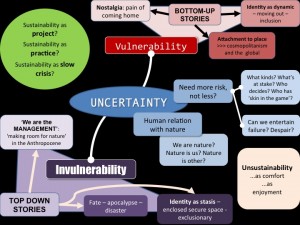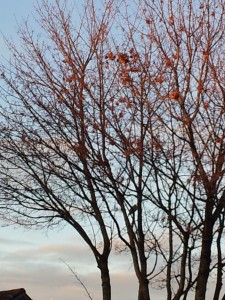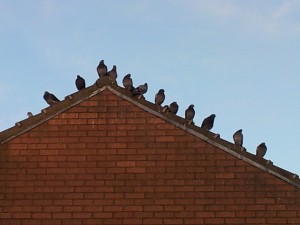Bringing together arts practitioners, social scientists and the occasional philosopher to discuss the relationships between arts practice, social science and sustainability at the Millennium Centre was an enterprise full of contradictions. What was particularly striking for me was that the arts performance by Claire Blundell-Jones (http://www.claireblundelljones.co.uk/), Tumbleweed, that book-ended the first day, already enacted for me a dialogue between art performance and social science, by placing in the middle of the performance the conference attendees who assembled in the freezing Cardiff Central Station car park to walk down to the Millennium Centre on the morning of the first day. The route chosen by Claire and Simon Whitehead took us through Callaghan Square, crossing to Bute Street where we encountered Claire and her tumbleweed, before crossing under the Queen Street – Cardiff Bay rail line onto the eternally windswept Lloyd George Avenue.
Callaghan Square is in the middle of the ‘central Cardiff enterprise zone’ (http://enterprisezones.wales.gov.uk/enterprise-zone-locations/central-cardiff), which Business Wales intends as an attractor for business to drive economic growth. Within Cardiff Council’s development plan for the next two decades, we find a space of future possibilities that centres around ‘ICT; Energy and environment; advanced materials and manufacturing; creative industries; life sciences; and financial and professional services.’ (Deposit Plan (http://www.cardiff.gov.uk/objview.asp?object_id=27295) [PDF], p. 27), as part of Cardiff’s participation in an anticipated general return across the UK to economic growth. To make this future possible, it’s proposed that the city needs spaces like the Square to be an attractive location for high-value services like legal and financial services, offering what is described as ‘modern Grade A accommodation’ office space. Where the Valleys fit into this story is not clearly laid out – but offices will always need cleaners…
Together with the Bay, as examples of redevelopment that can only be described as ‘iconic’ (because there are few other words suited to latch onto their blankness), the Square serves as a symbolic fetish for the bureaucratized magical thinking of urban development. Along with Lloyd George Avenue, the high road down to the Bay, the Square can only embody the promise of development by being an evacuated non-place, constructed over what existed there before, the old Sea Lock Pond – the very end of the Glamorganshire Canal that helped generate a previous trajectory of growth for Cardiff in the 19th century. Claire notes on her website that the tumbleweed is instantly recognisable yet always ‘out of
Through looking “out-of-place” they can act as a visual metaphor for internal struggles and conflict; feeling emotionally, socially uncomfortable or alienated from others. Overall, tumbleweeds often connote awkwardness and tension
http://youtu.be/oHr4AIiHVyY
Her performance during our transit to the WMC emphasized for me the vastness, blankness of the non-places through which the first part of our walk took us, drawn together around the tumbling tumbleweed. The minimalist certainty of these spaces is mirrored in the arc of the grand story of the future they have marked out: the 25-year schedule of repayments it will take to cover the £189m price tag of the PFI project for the building of Lloyd George Avenue.
 Previous events organised as part of the EFD project had produced a set of focal ideas to which speakers invited to our WMC event had been asked to respond. For me, the issue of uncertainty that lies at the heart of ideas of sustainability (what might a sustainable or unsustainable future look like? What should we do about it?) is a central preoccupation – both sociologically and philosophically. How do people make sense of this uncertainty, and make it liveable? What ethical and political significance does the persistence of this uncertainty have for us? In what follows, I lay out some reflections arising from the two days of discussion we enjoyed at the WMC in early December, taking my initial impetus from the dialogue between social science and art made manifest, at least for me, in Tumbleweed.
Previous events organised as part of the EFD project had produced a set of focal ideas to which speakers invited to our WMC event had been asked to respond. For me, the issue of uncertainty that lies at the heart of ideas of sustainability (what might a sustainable or unsustainable future look like? What should we do about it?) is a central preoccupation – both sociologically and philosophically. How do people make sense of this uncertainty, and make it liveable? What ethical and political significance does the persistence of this uncertainty have for us? In what follows, I lay out some reflections arising from the two days of discussion we enjoyed at the WMC in early December, taking my initial impetus from the dialogue between social science and art made manifest, at least for me, in Tumbleweed.
The role of stories in interpreting the future – and what pasts they come from, what protagonists and antagonists they feature, whose desires animate them and are acted out and satisfied in them – is a key concern of social science research concerned with the future. The “sociology of expectations”, for example, has examined extensively how the stories we tell about the future shape our sense of who we are and what we can do here and now, and thus affect social reality in the present. The sociology of risk has explored how the strategies that institutions have developed for making decisions in the face of a more or less quantified future have attained high degrees of social acceptance, reshaping what counts as legitimate knowledge about the future.
Between sustainability (and the possibilities set out at the WMC event by John McGrath for understanding it as an outcome, as a practice, or as an ongoing ‘slow crisis’) and unsustainability (as catastrophe, as comfortable habits, as the enjoyments that accompany familiar practices), we see-saw within the uncertainty of the future from a desire for invulnerability towards difficult acknowledgements of our vulnerability and frailty. In either case, we tell ourselves different kinds of stories about the past and the future. Seduced by a desire for invulnerability in the face of uncertainty, we focus on large-scale, top-down stories. These take many forms, depending on who the narrator(s) is/are and what they believe themselves to be capable of. Some plan for and control the actions of others and unexpected events, to create a space of security about us in which nothing unpredictable is allowed to happen. There is even security of a sort to be found in narratives of inescapable impending disaster – the security of being able to withdraw from the hazards of action.
Viewing the future as infinitely malleable, as something within our power to be managed or constructed, is a perspective that unites the evacuated spaces of central Cardiff and the Bay with the observation that, as we now are responsible for changing the Earth’s climate and in effect ushering in a new geological epoch, the Anthropocene, we must manage the earth’s systems – for at least as long as we continue to pursue dreams of GDP. In either case, we see our destiny as wedded to a quest for control and the widening of an imperium of expert knowledge. The future becomes emptied (Adam and Groves 2007), populated only by performance metrics of one kind or another – ranging from GDP figures to parts-per-million of CO2. By emptying the future in this way, the stories one tells can mandate all manner of potentially destructive actions and interventions here in the present, as the past (like the Sea Lock Pond underneath Callaghan Square) is overwritten and reduced to dispersed traces.
Stories about the past and future told from the top down tend to strain towards the position of a scientific observer become bureaucratic manager. When vulnerability is acknowledged, however, we tend to place ourselves in the positions of a participant, open on all sides to change, to being injured, to grief and distress as well as joy, rather than imagining ourselves to be in the manager’s chair. The theme of ‘homing’, as developed throughout the EFD project events, invites us to reflect on what is at stake in these stories, as our attachments – to people and places – shift and change as we journey through the world.
In the process, how do we relate to nature? If we are not to be its managers, then what are we? Are we thoroughly submerged in nature – or inside it and yet somehow outside it at the same time? And based on our identity, what should we do? As one of the oldest questions in Western philosophy runs, how do we want to live?
References Adam, B. and C. Groves (2007). Future Matters: Action, Knowledge, Ethics. Leiden, Brill.



